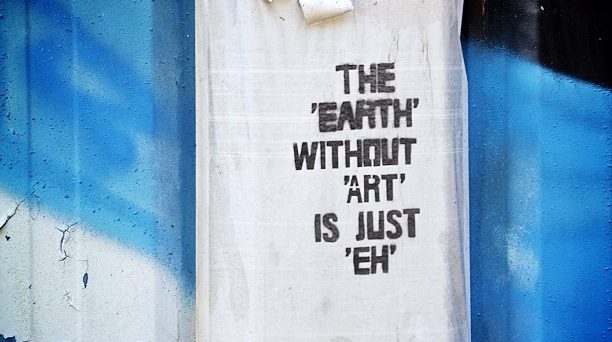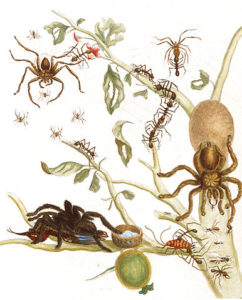
Albrecht Dürer, considered the greatest German artist of the Northern Renaissance, produced masterpieces that had an enduring influence on natural sciences for centuries.
Among the others, a woodcut of a rhinoceros that remained the animal’s ‘official’ scientific image until the 1700s; the first known pictorial representation of a syphilitic man; an astonishing terrestrial map of the eastern hemisphere in perspective; and woodcuts of the northern and southern skies shown as polar projections. His influence as a visual artist on science is profound because he “helped visualize changing conceptions of the universe”, explains Harvard art historian Susan Dackerman.
Dürer’s example is one of the many during centuries when the arts and science collaborated closely. The same intellectuals often practiced both – most famous of all, Leonardo da Vinci. Polymaths advanced knowledge because they could capture the beauty of what they observed and discovered, and they could turn their fascination for nature into art.

Maria Sibylla Merian, German naturalist and a contemporary of Isaac Newton, is known as a ‘botanical artist’ for the beautiful drawings she made of insects and plants. She documented the metamorphosis of the butterfly and other insects in detail never seen before. In 1705, after a scientific expedition to Suriname, she drew a tarantula eating a bird. The idea of a bird-eating spider was ridiculed at the time as fantasy. However, now we know that Merian was right and she drew a real predation event.
Mutual influence between the arts and sciences is not limited to visual art. Galileo Galilei wrote his ground-breaking theories and discoveries with a language that introduced the new genre of the scientific prose, and showed how the language of science can be beautiful, elegant and clear – not surprisingly, Galileo’s works are mentioned in literature textbooks.
The music by Johann Sebastian Bach is often described as ‘mathematical’ and even translated into functions, due to the symmetry, repetitions and intricate structures it is based on.
Can art advance science?
Pretty much everything has changed in scientific research since the Early Modern period, so can science and the arts still influence each other? Are we wrong in thinking them as two separate spheres of human knowledge?
Where does the creative drive for innovative experiments come from, if not from the power of imagination?
“These two seemingly different fields can feed and sustain each other”, says Vera Meyer, Professor of Applied and Molecular Microbiology at TU Berlin, “. . . not only for how to think about an object, but also how to show this object in a way that may not have been seen before”. In a recent Editorial, she argues that “ideas and viewpoints gained from looking at an organism artistically can lead a scientist to think outside the box, providing insights to reassess earlier scientifically hidebound attitudes”.
Vera is a fungal biotechnologist in her professional life, and a painter and sculptor for passion. “Where does the creative drive for innovative experiments come from”, says Vera Meyer in another inspired review, “if not from the power of imagination?”
“I only realized about 5 years ago—because of my dual interest in art and science”, explains Vera, “that artists and designers have studied Basidiomycota for the last 10 years as both new sustainable producers of composite materials, textiles and leather, as well as efficient decomposers and detoxifiers”.
Fungi are ambiguous organisms, and this fascinates both artists and scientists: they can be visible and invisible; they can produce and decompose substances; they can be valuable allied in biotech and dangerous toxins.

Purposes and methods of science and the arts are, of course, very different. Great artists who attempted science often got it all wrong in the past. Johann Wolfgang von Goethe, writer, statesman and thinker with interests in almost all fields, denied Newton’s theory of the decomposition of white light. He also supported various other theories that sound pseudoscientific today, but considering his historical context things are more complex than that.
He recognized the importance of considering phenomena globally, and understanding nature as a whole – which is what all great scientists strive to do.
Citizen science projects
Science and the arts can collaborate in today’s society and support each other through science communication and citizen science projects.
“Successful communication between the sciences and society is particularly important”, continues Vera Meyer, “in today’s atmosphere of uncertainty, lack of factual knowledge and questioning of scientific findings. That’s why I initiated the Citizen Science project Mind the Fungi! at the Technische Universität Berlin in 2018”.
This kind of platforms is an excellent way to boost co-operation between art, technology and the natural sciences, through public lectures, discussion rounds and workshops.
Art in the life of the busy academic
“During summertime”, says Vera, “I disappear into my studio and work on paintings, drawings and sculptures”.
The arts and creative activities can play an important role in the life of the busy academic. As argued in a recent Nature article, a regular hobby can support mental health, improve work–life balance, ease the stress, and help scientists find solutions in their work.
The damaging culture of overwork and the never-ending demands of research are the reasons why many scientists struggle to take time away from work and have personal interests. The key, says Alex Clark, associate vice-president of research at the University of Alberta in Edmonton, Canada, and co-author of the book How to be a Happy Academic (2018), is to stop feeling bad about having interests outside research. “We need to stop seeing hobbies and work as zero-sum games.”
Comments